| Published
on 20
Jun 2017 |
All rights reserved.
|
|
|
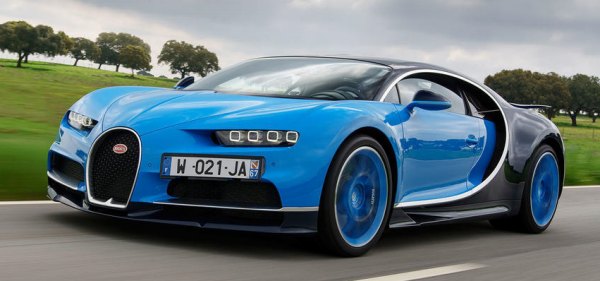
|
|
When
will supercar makers stop chasing higher top speed? To Bugatti, the
answer is probably never.
|
|
12 years ago, the ambition
of Ferdinand Piech and the power of Volkswagen empire created by far
the most powerful and the fastest road car in the world, Bugatti Veyron
EB16.4. It was good for 1001 horsepower and 253 mph. 5 years later, the
Super Sport version of the car lifted the bar further to 1200 hp and
268
mph. Crazy. It goes without saying such a level of performance is
inaccessible even on the world’s fastest roads or race tracks (not even
the Nardo bowl). It takes a straight test track like Volkswagen’s
Ehra-Leissen, and even so it needs extensive preparation and probably a
bit of luck to avoid exploding its Michelin PAX tires, because even the
smallest stone on the tarmac could result in tragedy. Yes, the world’s
fastest supercars have evolved to a state this ridiculous. It makes us
wonder: how fast is enough? When will supercar makers stop chasing
higher top speed?
To Bugatti, the answer is probably never. Since it was resurrected from
people’s memory by Volkswagen in 1998, Bugatti has been all about
absurd numbers. Yes, it still appreciates the craftsmanship and design
that made Ettore Bugatti’s cars famous, but it knows the world’s
wealthiest people buy it mainly because it is the world’s fastest and
the
most powerful car. So to speak it is a collector’s must-have. Not
necessarily the most thrilling or the best driving machine out there.
In fact, the Veyron was criticized for a bit dull to drive, blame to
its weight and lack of communication. It made the much lighter Porsche
918 Spyder, Ferrari LaFerrari and McLaren P1 better supercars to drive
in the real world.
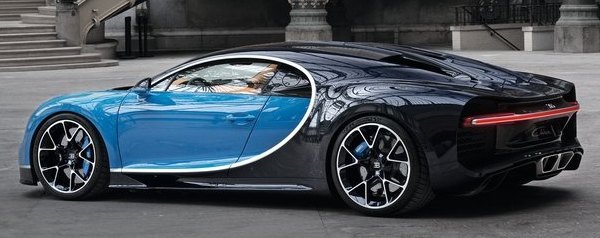
|
|
Like
Louis Chiron, it is not the fastest on track, but definitely has
the biggest numbers.
|
|
However, that is not going to stop Bugatti from making the successor of
Veyron. You know, Volkswagen group invested too much money into the
development of Veyron, from its mega quad-turbo W16 engine to the
world’s strongest twin-clutch gearbox, from the heaviest duty Haldex
4WD
system, active aerodynamics, self-leveling suspension to the industry’s
stiffest carbon-fiber chassis. Although the prosperity of supercar
market in the past decade helped Bugatti to shift more cars than
expected (450 cars in total), the project could be hardly called
profitable. To make the best of the investment, a Veyron 2.0 is the
logical answer. Of course, it needs a new name and new styling to cover
the evolution of mechanical package. Bugatti chose a strange name,
Chiron. Louis Chiron was not very famous even in his hey days. He
served Bugatti as its racing driver in the 1920s and 30s. Throughout
his winless career in Formula One, he would be remembered only as the
oldest F1 driver, when he raced Monaco GP at the age of 55. Ironically,
Bugatti Chiron sounds just like him – not the fastest on
track, but definitely has the biggest numbers.
To make sure the project really profitable, Bugatti plans to
build 500 cars this time around, and the price of each has doubled to
€2.4 million before tax, or £2.5 million after tax, or $3 million
in the USA. Moreover, derivatives like Supersport and Gransport could
follow afterwards.
Who would buy it? Plenty of rich guys. Bugatti said 250 already
ordered, many of whom also own the Veyron. In fact, an internal
statistic found these VIPs own 47 cars, 3 jets, 3 helicopters and a
large yacht on average, although I suspect the Sultan of Brunei alone
might have a significant impact to the statistics.
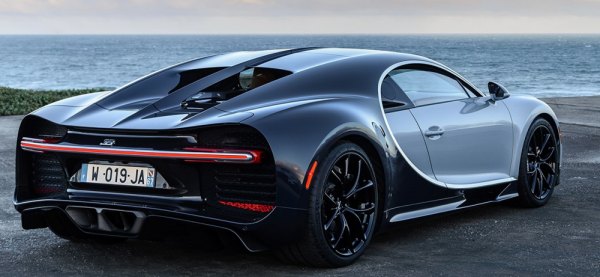 |
|
An
average buyer owns 47 cars, 3 jets, 3 helicopters and a large yacht,
although I suspect the Sultan of Brunei alone might have a significant
impact to the statistics.
|
|
The styling of the new car is clearly evolved from its predecessor. It
keeps the trademark horseshoe front grille and the cockroach shape, but
the details have been updated and improved. Up front, there are wider
and slimmer quad-LED headlamps which simply make the car looking
cooler. At each side, there is a huge chromed arc bridging the roof and
skirt smoothly, forming a distinctive graphical signature behind the
door, especially when the arc is also where the two-tone paint
separates. It also hides the huge air intake which draws cold air
towards
the big engine. This elegant feature not only combines both form and
function, it also gives some visual clues to the classic Type 57SC. At
the back, the tail of the new car trades the round theme of its
predecessor for a sportier kamm-style tail. A full-width LED stripe
acts as taillights and adds a lot to style. Overall, the Chiron appears
to be slimmer and sleeker than Veyron, even though it is actually a bit
larger. Measuring 4544 mm long, 2038 mm wide and 1212 mm tall, it
eclipses the old car by 79 mm, 38 mm and 7 mm respectively. The
wheelbase is unchanged at 2710 mm.
As before, the monocoque chassis is made of carbon-fiber. Its torsional
rigidity is said to be 50,000 Nm per degree, 10,000 Nm/degree lower
than the old car but is still a staggering figure. As before, fore of
the monocoque is an aluminum subframe which supports the front
suspensions. At the back, the aluminum engine cradle has been replaced
with one made of carbon-fiber, like Porsche Carrera GT. This should
help offsetting the weight gain of the engine, which is mounted on the
cradle through 10 titanium bolts. The underbody of the rear structure
is made of carbon-fiber with aluminum honeycomb sandwiched at its core,
so it is lighter and stronger still. Outside, all body panels are made
of carbon-fiber, finished beautifully with 6 layers of clear resin
coating.
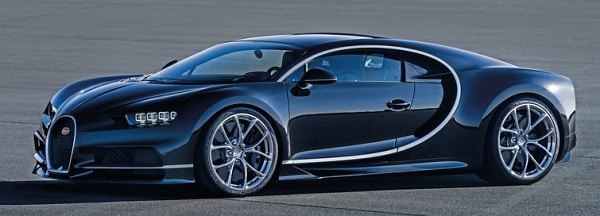
|
|
The
signature huge arc at its side combines form and function...
|
|
The engine remains that 8.0-liter W16 with quad-turbo, but its output
has been boosted from an already staggering 1200 hp at 6400 rpm to an
even more astonishing level of 1500 hp at 6750 rpm, strong enough to
match an M1 tank! Peak torque is lifted slightly from 1106 to 1180
lbft, but it is now available across a wider band, i.e. 2000-6000 rpm,
compared with the previous 3000-5000 rpm. More hp per liter yet wider
spread of torque, how is this achievable? The answer is the use of a
2-stage sequential turbocharging system. The turbos themselves are 69
percent larger than before so that they can pump out a maximum boost
pressure of 1.85 bar, a night and day difference from the 1.5 bar on
Veyron SS. That would have led to serious turbo lag, so the turbos are
arranged to work sequentially. At low rpm, all exhaust gases are
directed to spin 2 of the turbos, whereas the other 2 join from 3800
rpm to provide full boost. As expected, the higher power engine needs
stronger con-rods and crankshaft (both are no heavier than before),
upgraded cooling and lubrication systems. The fuel injection is
upgraded to dual-injection, with a port injector and a direct injector
in each cylinder. The high-flow intake manifold is constructed in
carbon-fiber. 6 huge catalytic converters and a titanium exhaust ensure
lower back pressure and lightweight.
The Ricardo-built 7-speed twin-clutch transmission is unchanged except
slightly larger clutches and lighter gears, unsurprisingly as the
maximum torque is increased slightly. As before it sits fore of the
engine within the wide transmission tunnel to improve weight
distribution. The active 4WD system is much the same as before, too. It
features a Haldex electrohydraulic multi-plate clutch to split torque
between front and rear. The front axle has a mechanical LSD, while the
rear axle gets a new active differential to enable torque vectoring.
Hopefully it could silence those criticizing the old car's handling too
dull.
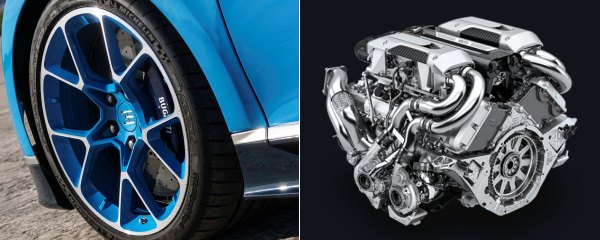
|
|
Boost
pressure is lifted to an unprecedented 1.85 bar, but lag is managed by
2-stage turbocharging.
|
|
The all-round double-wishbone suspension continues to offer adaptive
dampers and adjustable ride height, both react to driving mode and
speed. Braking is provided by Brembo carbon-ceramic discs and AP
Racing calipers, with 420 mm discs and 8-piston calipers up front, 400
mm
discs and 6-piston calipers at the rear. All discs are 20 mm larger and
2mm thicker than before. They need so, because the Chiron is not only
faster but also around 100 kg heavier than the SS, now tipping the
scale at 1995 kg.
Michelin continues to supply the Bugatti with special tires, but it is
now a version of its Pilot Sport Cup 2 instead of the exclusive PAX.
This means a set will cost only half as much as before, although the
owners might not care. In order to reduce understeer, the front tires
are widened from 265 to 285mm, while the rear tires are narrowed from
365 to 355mm, but they are an inch taller. This means the rear contact
patch area is actually 12 percent larger, while the front is 14 percent
larger. More contact with the ground means more grip and traction, and
more ability to transform the power to speed.
The decisions of these changes are made by its test driving guru Loris
Bicocchi. Bicocchi is the Italian equivalent of Roger Becker. He has
been
responsible for the handling and ride tuning of many supercars, e.g.
Bugatti EB110, Dauer 962LM, Edonis, Pagani Zonda, Koenigsegg CC8S / CCX
and KTM X-Bow. Can he work out a magic to the Chiron? We shall see soon.

|
|
The
speedo shows 500km/h or 310 mph, but how high is its limit? No one
knows until now. Let's say 280-290 mph if its tires allow...
|
|
Naturally, aerodynamics is extremely important to the world’s fastest
car. The Chiron employs flat underbody tray and some active aero
devices. Under the front floor, there are a couple of flaps whose pitch
is adjustable to alter the front downforce. At the back, the huge rear
wing can be set at 4 positions – fully retracted (at low speed), fully
extended (at higher speed), slightly extended (when attacking top
speed) and tilted forward at 49 degrees (under braking, to act as “air
brake”, a la McLaren). When it is fully extended, its angle varies
automatically according to downforce need.
The car offers 5 driving modes: 1) EB
mode is the normal mode; 2) Lift mode raises ground clearance
by 10mm to avoid bumps; 3) Autobahn mode
drops the front axle by 20mm to increase downforce. Meanwhile, the rear
wing is extended and the steering gains weight. 4) Handling mode stiffens the dampers,
weighs up the steering and tilts the extended rear wing to add more
downforce. 5) Top Speed mode
has to be activated by a separate key to make sure you know the risks.
It drops the ride height by 15mm and 30mm front and rear respectively
and lower the rear wing to reduce drag. This is when you can have the
electronic speed regulation lifted from 236 to 261 mph, yet it is not
the limit of the Chiron. Volkswagen has yet to demonstrate its maximum
potential. It is likely to be limited by the capability of the tires.
Michelin said it tested the tires to 279 mph with aircraft rigs, but
for road use it is another matter. Otherwise, the Chiron should be good
for at least 280 mph, or even 290 mph. Considering it offers an extra
300 horsepower over the 268 mph Veyron SS, I think that is possible.
What about Nurburgring time? Sorry, it is more Mulsanne straight than
Nurburgring kind of car. The Veyron had never pursued Nurburgring lap
record (think of its weight!), so the Chiron is the same.
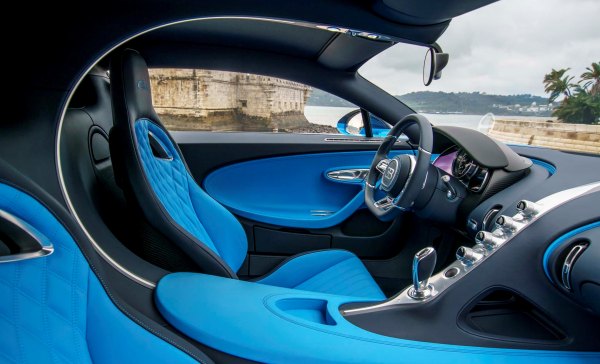 |
|
This
is easily the roomiest carbon-fiber passenger cell, and the easiest to
entry as well. No wonder billionaires like Bugatti.
|
|
The cabin is both comfortable and elegant. This is easily the roomiest
carbon-fiber passenger cell, and the easiest to entry as well. No
wonder billionaires like Bugatti. The chairs are supportive yet wide
enough to be comfortable for everyday drives. The flawless driving
position is electrically adjustable (though steering wheel is manual).
Visibility is okay, but poor at rear and over the rear shoulders. Build
quality matches your expectation for a million-dollar car. The steering
wheel is milled from a solid block of aluminum. Every surface is
covered with leather, metal or carbon-fiber, without a single piece of
plastic. The center console is machined from another big piece of
aluminum. Thanks God, Bugatti sidelines digital instruments and keeps
elegant analogue gauges. Sometimes I think too much technology ruins
art. Speaking of art, the huge arc of LED light bar separating between
the occupants makes an impressive statement of art, although some might
find it flamboyant. Anyway, if Ettore Bugatti was still alive, I think
he would have liked this, definitely more than the Veyron.
On the Road
If you read a lot about Veyron, you will be easy to understand Chiron,
because it is not fundamentally different from its predecessor. Yes, it
is very fast, but does it feel quicker than any of the hybrid supercar
trio? That depends on the speed at which you concern. At lower down the
rev, the quad-turbo W16 does show some turbo lag, although less so than
the Veyron. Once it is on full boost, the stream of head-pressing
g-force is unstoppable, but you might say the same to a P1 or LaFerrari
as well. Only by 124 mph (200km/h) it is 0.3 or 0.4s ahead of those
rivals. As the race develops into higher speeds, the Bugatti uses its
superior output to widen the gap. If you believe manufacturer’s quotes,
by 186 mph (300km/h) it is about 1.3s quicker than LaFerrari. Even
Koenigsegg One:1, a car possessing a higher power-to-weight ratio, has
to trail the Bugatti by 0.7s. Having said that, these differences are
too slim to be felt in the real world. Subjectively, the Chiron is
probably too refined to feel fast. It is also not quite as emotional as
some rivals. The exhaust noise of its 16 cylinders is not half as
exciting as the 12 cylinders of Ferrari. The lack of torque-fill at the
moment you plant throttle pedal means the acceleration doesn’t feel
quite as responsive as its hybrid rivals, too. In the end, you need an
airfield or at least a clean stretch of Autobahn to feel the
superiority of it. Tell me, when was your last time finding a clean
stretch of Autobahn?
 |
|
You
need an airfield or at least a clean stretch of Autobahn to feel the
superiority of it.
|
|
The Chiron is refined, impossibly refined for a 280mph machine. Its
ride is firm but in EB mode comfortable enough for commuting in town.
The steering is light enough at low speed. It is also quieter than the
Veyron inside, with less tire roar and less unpleasant engine noise.
The heavy-duty gearbox is incredibly smooth and obedient. Most
impressive is how stable it feels at 200 mph. It tracks straight and
feels rock steady. The steering feels just as calm as at half the
speed. The brakes are powerful and dependable, even deliver good pedal
feel at low speed.
The big Chiron controls its movement in corners very well, too,
although
hopeless to match the lighter supercars in modern format. Compared with
Veyron, you will find its electrical power steering more responsive
(thanks to tightening its ratio by 9 percent) and more communicative,
if still too heavy in Handling mode to feel truly informative. While it
is not exactly agile, it feels planted and extremely stable in corner.
Its tires produce bags of traction and grip, and understeer is reduced.
Back off mid-corner and you will even find its nose tuck in a little
and the rear edge out. This is definitely a more interesting car to
drive than the Veyron.
So the Chiron has kept the Veyron’s luxury and easy going manner while
pushing its performance envelop to another level. It has the handling
and driver engagement improved, if still hard to match most of its
rivals. The styling is more artistic, and build quality is second to
none. However, all these are just what we have expected to see. Bugatti
has delivered its promises, but Chiron is no longer a milestone in
automotive history like its predecessor did 12 years ago. In fact, it
feels a bit old-school by now.
|
Verdict:     |
| Published
on 27
Nov
2020 |
All rights reserved.
|
|
Divo
|
|
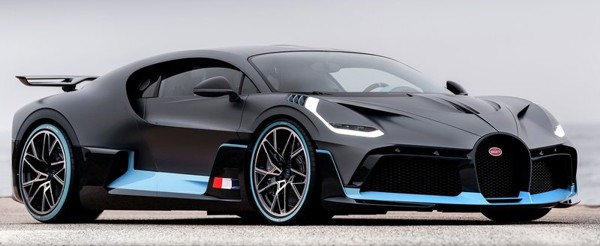
|
|
At
double the price of Chiron, how good is the Divo?
|
|
Supercars
get crazy these days, not just in terms of performance but also price.
At €5 million before tax, the new Bugatti Divo costs more than double
the price of Chiron, which was launched at €2.4 million apiece.
However, as implied by its looks, the Divo is not an all-new model but
more a track-oriented version of Chiron. Its aerodynamics and chassis
are modified for that purpose, but the 8-liter quad-turbo W16 engine is
unaltered, so horsepower stays at 1500hp.
The exterior styling of Divo differs quite a lot from the Chiron.
Basically, the bodywork is all new. The front end is overhauled, with
new LED headlights mounted at a higher and outer position of the
flanks, and they are not easily spotted because the openings are
extremely thin. There is a C-shape LED illumination surrounding each
headlight for style. The nose section is more like that of a race car,
fully occupied by air intakes and a massive front splitter, which
extends sideway to vertical fins.
At the side, the biggest change is the huge, C-shape intake of Chiron
has been cut by half, so it looks less flamboyant and more functional.
At the back, everything is changed, such as square-shape quad-exhaust,
new diffuser design and very fancy LED taillights with 3D effect
graphics. The Chiron's retractable rear spoiler is replaced with a
wider permanent spoiler, whose angle and height are both adjustable. On
the roof, there is a NACA duct added to aid engine cooling without
increasing drag. Overall, Bugatti claims the car generate 456kg of
downforce (at unspecified speed), 90kg more than Chiron.
Changes to the chassis is pretty subtle though. Unquestionably, the
suspension, steering and electronic driving aids must have been
retuned, but the most apparent change is increased camber, which
enhances lateral grip from 1.5 to 1.6g. On the flipside, this means the
tires will generate more heat on straight. As a result, Bugatti is
forced to delete the Top Speed mode, which, on Chiron lowers the
suspension and drops the rear spoiler to go beyond 236mph (380km/h).
This means the Divo is limited to 236mph.
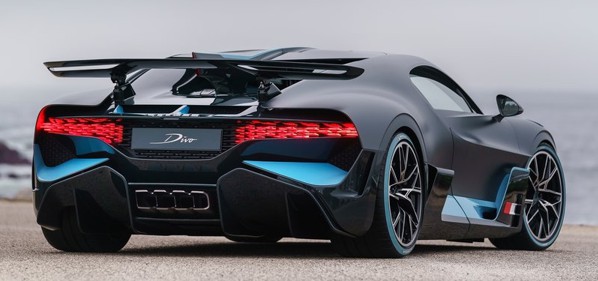
|
|
Not
exactly a track car, but unquestionably better than the Chiron. More
stylish, too.
|
|
The car
enjoys some weight saving measures, but equally modest. Efforts like
using lighter wheels and a carbon-fiber intercooler cover, reducing
sound insulation, ditching storage cubbies and introducing a lighter
audio system amount to 35kg saving. Hey, the Chiron tips the scale at 2
tons.
If you think all these upgrades are not worth the extra €2.6 million,
think about its rarity: only 40 cars will be built. If you change your
mind now, sorry, all of them have been sold. In fact, before the car’s
announcement in 2018.
On the road, the Divo’s steering feels sharper and more communicative
than the Chiron. It corners harder and flatter in a fast bend, while
the adaptive suspension and stiff structure preserves a rounded ride on
harsher urban roads. It is not exactly a track car – nothing at 2 tons
can be – but a versatile hypercar that combines luxury, usability and
staggering performance. Better than the Chiron? Unquestionably.
Regarding the name Divo, it comes from another legendary Bugatti
driver. Albert Divo joined Bugatti's team in 1928, winning the famous
Targa Florio race straightaway in Type 35B. He defended the title in
the following year, but otherwise his success in motor racing seemed to
be limited. The Bugatti Divo won't be raced, of course. Like Chiron, it
is a toy for the very rich.
|
Verdict:     |
Published
on 3
Nov 2021
|
All rights reserved.
|
|
Chiron Super Sport
|
|
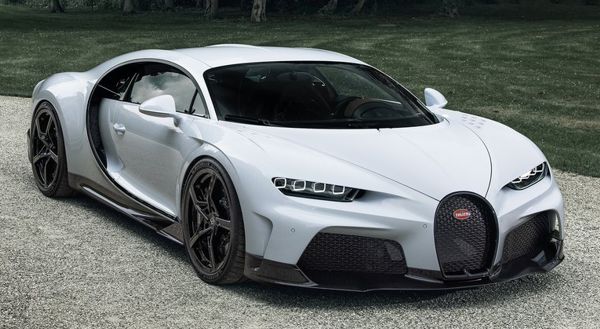
|
|
The
ultimate evolution of combustion engine hypercars.
|
|
When
Chiron was launched in early 2017, Bugatti promised to cap its
production to 500 units (though excluding derivatives like Centodieci).
After almost 5 years, it is coming to the end. At the time of writing,
fewer than 50 build slots are left. The standard Chiron is no longer
available to order, leaving only Chiron Pur Sport and Chiron Super
Sport for customers to choose between. Pur Sport is a track-oriented
Chiron, using a fixed rear wing, stiffer suspension, track tires,
shorter gearing and 50kg weight reduction to enhance track performance.
Meanwhile, Super Sport remains a road car, just more powerful, more
slippery and faster again than the original Chiron.
The name Super Sport recalls our memory of the EB110 Super Sport, but
these days Bugatti uses the name too often. The Veyron had a Super
Sport version. Even the Chiron has 2 Super Sport models preceding this
one. The first one was a prototype driven by Andy Wallace to 304.8 mph
at Volkswagen's test track Ehra-Lessien in 2019. Bugatti claimed it set
a new world speed record for production cars, but technically speaking
it was neither a production car nor a true land speed record, because
that car had a lowered ride height not available to any production
versions of Chiron, and it set the speed record in one way rather than
two-way average. Later on, Bugatti built 30 units of the so-called
Super Sport 300+, a special edition celebrating the so-called world
speed record. It was said to be the same as the prototype except
reverting to standard ride height and interior (the prototype added a
roll cage and data logger but removed the passenger seat and changed
the driver seat to racing bucket, thought these changes are unlikely to
alter top
speed), and its top speed is regulated at 273 mph (440 km/h). The SS
300+ costs 3.5 million euros before tax. All cars were painted and
trimmed in the same black and orange graphics.
However, after the 30 cars sold out, Bugatti introduced the Super
Sport. Mechanically, it is completely the same as the SS 300+, but it
is a production car, so you can specify paint and trims as you like. It
is a little cheaper at 3.2 million euros plus tax, so buyers of the SS
300+ might feel cheated.
No matter
the “record-breaking” prototype, the special edition SS 300+ or the
production SS, they share the same 1600 hp motor, 100 more than the
standard W16. Bugatti does not reveal detailed changes, just said the
oil pump, cylinder heads and valvetrain have been modified, while
larger turbos are used. However, its maximum boost of 1.8 bar is
actually 0.05 bar down on the Chiron. The motor is more enthusiastic at
the top end, with redline lifted by 300 rpm to 7100 rpm. Peak power is
produced at 7000 rpm, 250 rpm up. Peak torque stays at 1180 pound-foot,
which is also the torque capacity of its transmission, but its
available band is extended from 6000 to 7000 rpm. To match the higher
potential, the 7th gear is made 3.6 percent taller.
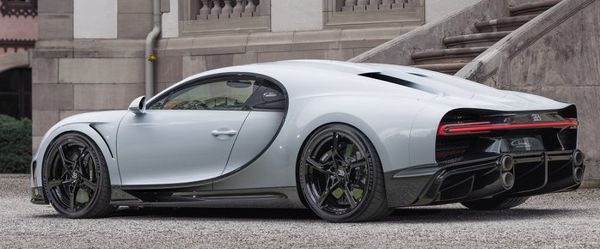
|
|
By
300km/h, it is 1.5 second ahead of the standard Chiron.
|
|
The SS
also shares the same low-drag bodywork with the SS 300+ and
prototype. Up front, it has modified front splitter, intakes and
vertical fins. Oval holes are opened on each front fender to release
air pressure built up in the wheel wells, and by the way pays tribute
to the EB110 SS which features similar oval holes at the flying
buttresses. At the rear, the tail is extended by a massive 250 mm to
cut drag and make possible a longer and deeper diffuser. The latter
also gets wider, thanks to rearranging the exhaust from horizontal to
vertically stacked. As the new diffuser can produce a lot more
downforce, the rear wing remains completely retracted at top speed,
reducing drag further. Unlike the Pur Sport, the SS runs minimal
downforce, thus it is not quite as stable in fast corner.
Compared with the standard Chiron, the chassis has recalibrated
suspension (slightly stiffer), steering and stability control (both
promote high speed stability). Michelin developed a special Cup 2 tires
for it, which is capable of 500 km/h (310 mph). Kerb weight is reduced
by 23kg, but still rests at nearly 2 tons.
Are the performance and handling transformed? No, it drives like the
standard Chiron, just being slightly faster. More powerful it might be,
the W16 lacks the spine-tingling soundtrack of a V12. While an extra
100 horsepower sounds a lot to ordinary cars, it is not exactly a step
change to something already possessing 1500 horsepower. You need to
drive it and the standard car back to back to feel the extra pace,
which happens beyond 200 km/h. By 300 km/h, it is 1.5 seconds ahead. To
most motorists who don’t drive on tracks, such an advantage is
irrelevant. Should they take the car to a tighter and twistier track,
they will find the SS lacking the downforce to shine, or the ability to
powerslide at will. What it does impress is the remarkable traction and
high-speed stability. It is a hypercar to trust and depend, but not to
thrill and engage.
History book will remember this one as the ultimate evolution of
combustion engine hypercars. No matter displacement, number of
cylinders, number of turbos, weight and top speed, all things are in
excess. Following the merger with Rimac, Bugatti is likely to turn the
next generation car to electric, and I wonder how it can out-number
others in the new era.
|
Verdict:     |
|